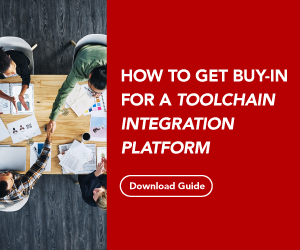
Software development teams often face challenges that can hinder productivity and disrupt the successful delivery of projects. From wasted time due to duplicate data entry to missed opportunities and misallocated talent, these pain points can significantly impact an organization’s efficiency and innovation.
In this blog, four common pain points will be explored in detail, and how robust integration strategies, such as those offered by Planview Hub, can help address these challenges and drive your organization toward greater success.
1) Wasted Time: The Hidden Drain on Productivity
One of the most paradoxical yet pervasive issues in technology management is wasted time due to duplicate data entry. Many of you might recognize this scenario: a developer logs an update in JIRA but then needs to re-enter the same information in another system, like Salesforce, or even in another instance of JIRA. This manual “swivel chair” activity is inefficient and prone to human error.
For example, consider a developer working on a critical project who updates the project status in JIRA and then spends another 30 minutes updating the same information in Salesforce to keep the sales team informed. This repetitive process distracts the developer from their primary task, leading to decreased productivity and potential delays in project delivery.
Effective software toolchain integration eliminates this wasted time and effort by automating the synchronization of data across systems, ensuring that each piece of information is entered once and propagated as needed.
2) Wasted Opportunity: Missing Chances to Delight Customers
Another significant pain point is the missed opportunity to capitalize on customer feedback. When a customer expresses a need or suggestion, the information can get lost or delayed as it passes through multiple layers of communication within the organization.
Imagine a scenario where a key customer suggests a product enhancement that addresses a broad market need. However, the sales representative who received the feedback must first relay it to the product management team, who then need to translate it into product requirements and communicate it to the development team. Each step introduces the risk of miscommunication and delay.
Integration bridges this gap by ensuring customer feedback entered in a system like Salesforce can automatically be relayed to development tools such as JIRA. This seamless flow of information allows your team to respond swiftly to customer needs, enhancing customer satisfaction and positioning an organization to capture larger market opportunities.
3) Wasted Talent: Misallocation of Skilled Resources
A critical but often overlooked issue is the squandering of talent. Salespeople should be selling, and engineers should be coding. However, when these skilled professionals spend time on data entry or repetitive updates across multiple systems, their talents are not being used effectively.
For instance, if a salesperson spends significant time updating customer interaction details in multiple systems, they have less time to engage with potential clients and close deals. Similarly, if an engineer has to update project statuses across different platforms, their focus shifts from solving complex technical problems to mundane administrative tasks.
Software toolchain integration solutions can automate data synchronization and keep these professionals focused on their core tasks, ensuring that they remain engaged and use their valuable skills to their organization’s full advantage.
4) Wasted Life: The Frustration of Inefficient Systems
While it might sound trivial, the frustration of dealing with inefficient systems can significantly impact morale. Spending hours trying to make disparate systems communicate is not only inefficient but also demoralizing. A robust software toolchain integration solution like Planview Hub can alleviate this frustration by providing a seamless, automated flow of information, allowing teams to focus on more meaningful work.
Consider the scenario where an IT team spends countless hours troubleshooting integration issues between critical systems. This not only leads to burnout but also diverts attention from strategic initiatives that could drive innovation and growth. By implementing a reliable software toolchain integration solution, organizations can reduce this frustration, improve employee morale, and create a more dynamic and productive work environment.
| Discover the six most common sources of waste in software development and how to address them effectively with Planview’s Kalkylator för avfall vid mjukvaruutveckling. |
Real-Life Example: The Cost of Inefficiency
Consider a typical 500-person product development department. Such a department might use three or four different tools, leading to the creation of around 55,000 artifacts annually. Without integration, this scenario results in approximately 5,500 hours of wasted effort due to duplicate data entry. Moreover, manual data entry leads to errors about 8% of the time, causing miscommunications and potentially costly mistakes.
For instance, a simple error in entering a deadline could result in a significant project delay, impacting customer satisfaction and project timelines. An account manager might record a critical project milestone date incorrectly in one system, leading to a mismatch with the actual schedule tracked in another system. This discrepancy could result in a missed deadline, dissatisfied customers, and potentially lost business.
The Digital Supply Chain: Extending Beyond Your Organization
The value stream in your organization doesn’t stop at your internal operations; it extends to your digital supply chain. Many organizations rely on external vendors and partners for critical software components. Effective integration can facilitate seamless collaboration with these external entities, ensuring that your entire value chain operates efficiently.
In the modern business environment, the digital supply chain includes various software vendors, service providers, and external partners who contribute to your product’s success; by integrating with your suppliers’ systems, you can ensure timely and accurate updates.
For example, a financial services company might rely on external vendors for security software, fraud detection systems, and other critical components. Integrating these vendors’ systems with internal platforms can ensure real-time updates and provide a unified and secure experience for end-users.
In the automotive industry, an organization might use dozens of different software components for features like antilock braking systems, GPS navigation, and driver assistance technologies. Each component comes from different suppliers and has its own development timelines and update cycles. Integrating these disparate components into the development process for a single end product requires robust, scalable integration strategies.
The Future of Software Toolchain Integration
Integration is not simply about connecting systems; it’s about eliminating waste, maximizing talent, and enhancing efficiency. As technology leaders, addressing these pain points through robust software toolchain integration strategies is crucial for driving productivity and maintaining a competitive edge.
At Planview, we are committed to providing solutions that empower organizations to operate seamlessly and efficiently, ensuring that every opportunity to delight customers and optimize operations is captured. By leveraging advanced integration solutions like Planview Hub, you can transform your organization’s integration strategy, reduce waste, and drive innovation across your enterprise and digital supply chain.
For more information on how Planview Hub can transform your organization’s integration strategy, watch this on-demand demo.




